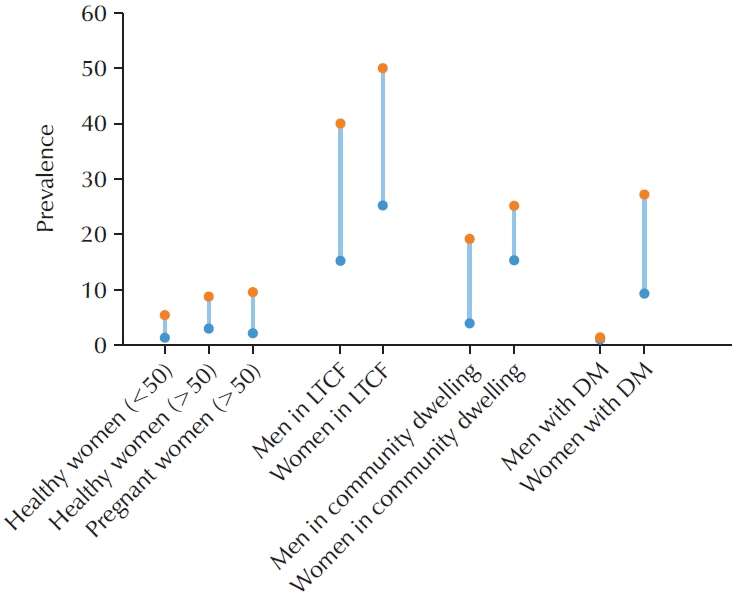Search
- Page Path
- HOME > Search
Review Article
- Asymptomatic Bacteriuria in Older Adults – Diagnosis, Management, and Future Directions: A Narrative Review
- Ki Hong Kim, Hee Jo Yang
- Urogenit Tract Infect 2025;20(2):58-66. Published online August 31, 2025
- DOI: https://doi.org/10.14777/uti.2550002001

-
 Abstract
Abstract
 PDF
PDF PubReader
PubReader - Asymptomatic bacteriuria (ASB) is defined as the presence of bacteria in the urine in the absence of urinary tract infection (UTI) symptoms. The prevalence of ASB increases with advancing age, particularly among older patients with underlying health conditions. ASB is especially common among residents of long-term care facilities; however, distinguishing ASB from symptomatic UTI in this population remains a significant clinical challenge. The frequent occurrence of ASB often results in unnecessary antibiotic administration, thereby contributing to the development of antibiotic resistance. Current clinical guidelines recommend screening for and treating ASB only in certain circumstances, such as prior to urological procedures or in pregnant women. There is a pressing need for improved diagnostic approaches to differentiate ASB more accurately from UTI, particularly in older adults. Reducing unnecessary urine testing and inappropriate antibiotic use may help prevent over-treatment and minimize associated risks, including Clostridium difficile infection and increased antimicrobial resistance.
-
Citations
Citations to this article as recorded by- Editorial for Urogenital Tract Infection (UTI) 2025 Vol. 20 No. 2 – Highlights of This Issue’s Papers and the UTI Editors’ Pick
Koo Han Yoo
Urogenital Tract Infection.2025; 20(2): 55. CrossRef
- Editorial for Urogenital Tract Infection (UTI) 2025 Vol. 20 No. 2 – Highlights of This Issue’s Papers and the UTI Editors’ Pick
- 3,997 View
- 46 Download
- 1 Crossref

Review
- Antimicrobial Therapy and Antimicrobial Stewardship in Urosepsis
- Tae Hoon Oh
- Urogenit Tract Infect 2023;18(1):15-19. Published online April 30, 2023
- DOI: https://doi.org/10.14777/uti.2023.18.1.15
-
 Abstract
Abstract
 PDF
PDF PubReader
PubReader ePub
ePub - Since the latest knowledge on the treatment and countermeasures for sepsis is being updated at a rapid pace, becoming familiar with the Surviving Sepsis guidelines is helpful for patient prognosis. Extended-spectrum beta-lactamases (ESBL) are important factors when selecting early empirical antibiotics for sepsis caused by urinary tract infections. For severe septic shock, prolonged infusion and combination therapy need to be considered.
- 3,323 View
- 45 Download


 KAUTII
KAUTII

 First
First Prev
Prev


